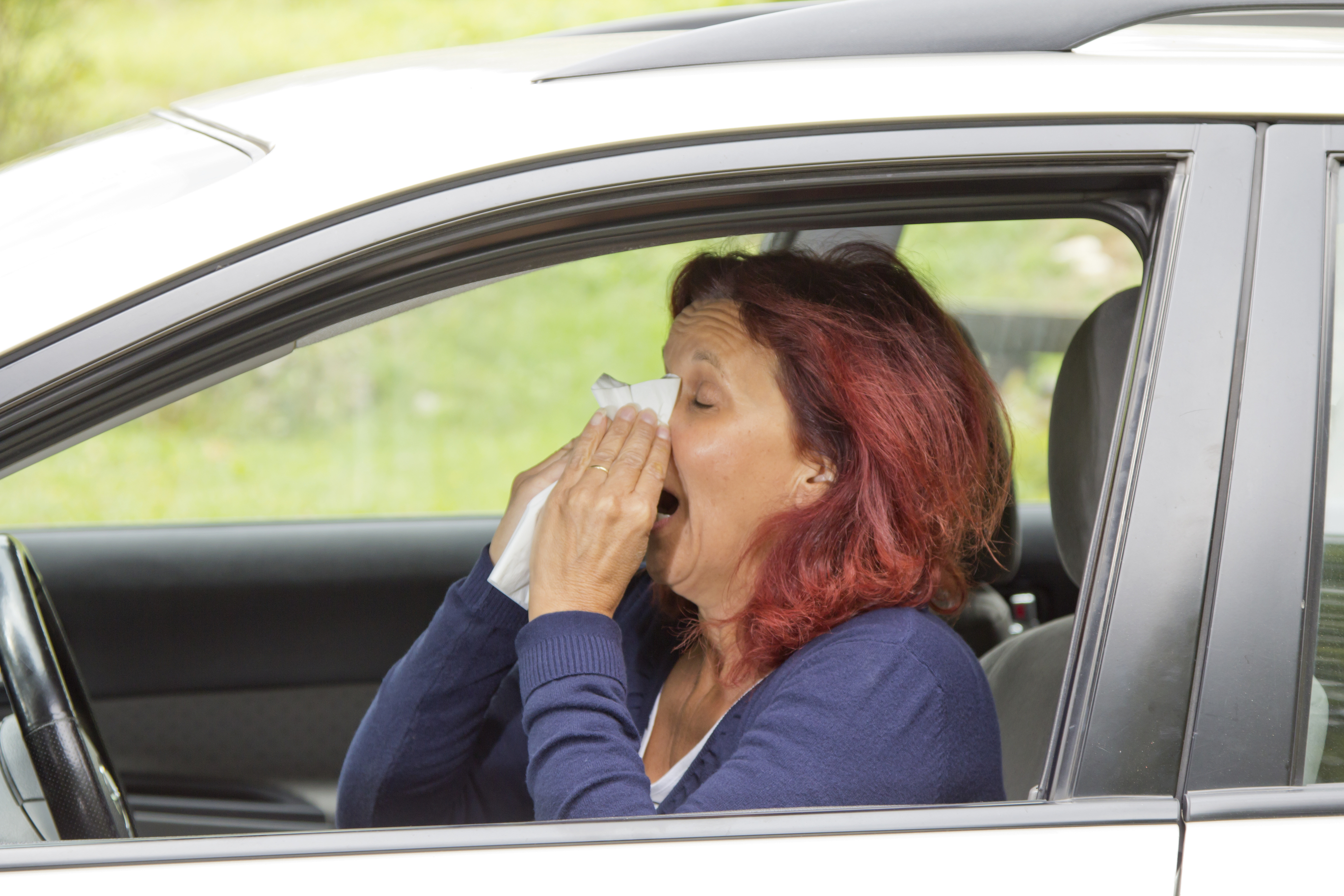Driving with the Enemy: Tips for Battling Spring Pollen

Allergy sufferers who dread the yellow onslaught of spring may not realize that their vehicle is conspiring with the enemy. Pollen clings to painted surfaces on your vehicle. It settles on seats and dashboard, courses through vents and nestles in the fibers of interior carpet.
“We’re expecting a very robust allergy season given the late winter,” said Dr. Clifford Bassett, an allergist in New York City and fellow of the American College of Allergy, Asthma & Immunology. “Drivers need to have their plan in place.”
For starters, Dr. Bassett recommended closing the cabin environment of your vehicle to free-flowing air. Breezes blow in pollen that accumulates and contributes to on-going health issues.“Don’t recirculate the air in your car,” Dr. Bassett said. “Use the climate control system on high pollen days.”Do you like to park in the shade on a warm spring day?
Trees are dropping copious amounts of pollen this time of year, Bassett said. That thin yellow film you see on painted surfaces gets on clothes, skin and blows into the cabin.“If you use hair gel, your hair becomes a pollen magnet,” Dr. Bassett said, especially if you are driving with windows open or riding in a convertible with the top down.“Wear big sunglasses.
They help keep pollen out of your eyes.
"Pollen collects on the surface of your vehicle and can make it feel like sandpaper. The longer contaminants are left on the surface, the more likely they will bond and become harder to remove.“Dust it off frequently so it doesn’t build up and bake onto the surface,” said Jim Dvorak of Mothers Polish. Run your hand down the surface of your vehicle and check for rough spots, Dvorak said.
Check again after you have washed your vehicle.If the rough spots remain, Dvorak suggested using a “clay bar” to remove stubborn contaminants. A clay bar is a synthetic substance for removing contaminants such as pollen from painted surfaces.“Clean all the surfaces—vinyl, leather, glass,” Dvorak said. “Always vacuum thoroughly first to remove any loose particles, including underneath the carpets.”
Substances such as pollen can stick stubbornly to surfaces. Dvorak suggested washing rugs and using rug cleaners to remove embedded particles. “Change out the cabin air filter,” Dvorak said, who emphasized the filter is a critical component of the vehicle’s climate control system.Anytime you turn on the air conditioner, the cabin air filter removes pollen and other particulates such as dust, bacteria and auto exhaust.
Replacement is recommended about every 12,000 to 15,000 miles. Check your vehicle’s recommended maintenance schedule for specific details on your make and model.
Old filters prevent the climate control system from working properly and increase the level of environmental contaminants inside the vehicle. Soiled filters can create musty odors and unhealthy air or, in extreme situations, prevent the system from functioning properly.
Dvorak and Dr. Bassett had the following recommendations to reduce allergy problems when driving this spring:
- Drive with the windows rolled up and climate control system on. The system filters out contaminants such as pollen and other allergens.
- Wear sunglasses , the bigger the better. “Big sunglasses are great to help prevent red, itchy and watery eyes,” Dr. Bassett said.
- Be diligent about washing off pollen on your vehicle exterior. It may require a little bit of elbow grease—pollen can be sticky and the sun can bake it into the finish. Use a wash mitt and, if needed, a clay bar to remove particles stuck to the surface.
- Clean the interior of your vehicle frequently. That means the rugs, under the rugs, vinyl surfaces, glass, upholstery and vents. Pollen gets in and under everything, but a healthy cabin can reduce allergy problems.
- Dust off the exterior of your vehicle to remove allergens. Use a microfiber cloth or duster intended for vehicles.
- Apply a heavy coat of wax to help keep pollens and other environmental contaminants from sticking to the surface of your vehicle. Sun can bake particles into the paint.
- Replace the cabin air filter. Old, dirty filters are less effective at removing allergens and can create musty odors.